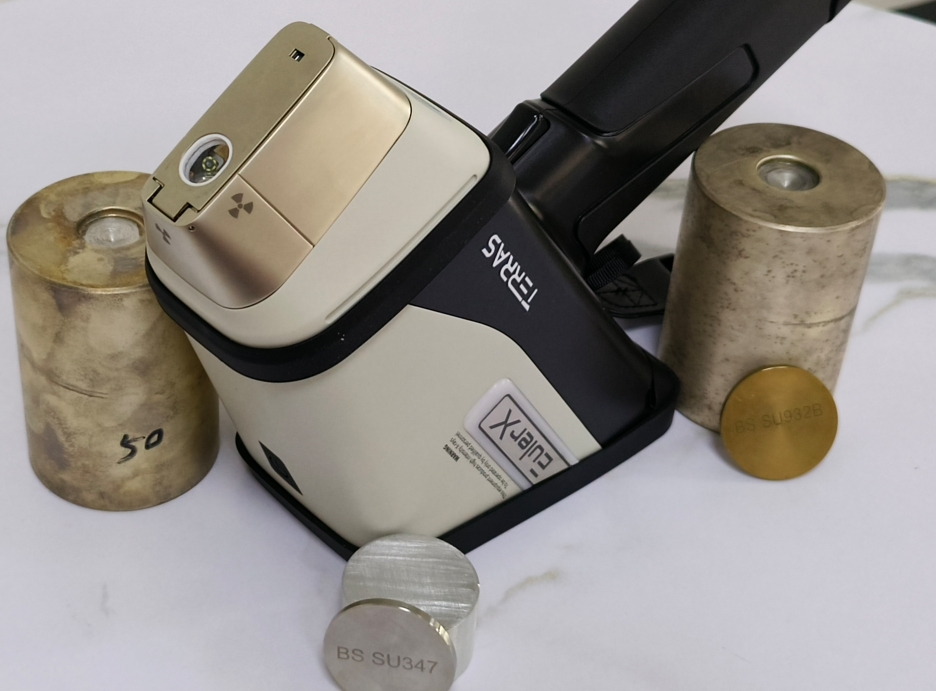
Metal Material
A high-tech enterprise focusing on the development and application of X-ray technology products, committed to becoming a leading supplier of X-ray industrial testing solutions.
Precision in Your Pocket: Maximizing Handheld Spectrograph Performance
In the realm of scientific instrumentation, handheld spectrographs stand out as revolutionary tools that bring precision analysis to your fingertips. These compact devices, once confined to laboratory settings, are now portable, user-friendly, and powerful, offering a myriad of applications across various industries. Whether you're a researcher in the field, a quality control manager in manufacturing, or an environmental scientist on-site, handheld spectrographs provide invaluable insights and data with unparalleled convenience. In this article, we'll delve into the capabilities of these pocket-sized marvels and explore how you can maximize their performance for optimal results.
Understanding Handheld Spectrographs
Handheld spectrographs utilize advanced spectroscopic techniques to analyze the composition of materials quickly and accurately. By measuring the interaction of light with matter, these devices can identify elements and compounds present in a sample, offering insights into its chemical makeup. They typically employ technologies such as X-ray fluorescence (XRF), near-infrared (NIR) spectroscopy, or Raman spectroscopy, each with its own strengths and applications.
Applications Across Industries
As a versatile analytical tool, handheld spectrometers have extensive and rich cross-industry applications. From manufacturing to medicine, from environmental monitoring to food safety, these portable devices play a key role in various fields.
In manufacturing, handheld spectrometers are widely used for quality control and material analysis. Manufacturers can use these devices to quickly identify the chemical composition of raw materials, verify product compliance, and detect any potential impurities or defects. For example, in the metal processing industry, by using X-ray fluorescence spectrometers (XRF), manufacturers can quickly analyze the composition of metal alloys to ensure that products comply with prescribed specifications and standards.

In the field of medicine, handheld spectrometers also play an important role. Drug manufacturers can use these devices to verify the composition and purity of drugs and ensure they meet quality standards and regulatory requirements. In addition, handheld spectrometers are used for drug identity verification to help detect and prevent counterfeit drugs from entering the market and protect public health and safety.
In the field of environmental monitoring, handheld spectrometers are an indispensable tool. Environmental scientists can use these devices to conduct soil, water and air quality analyzes in the field to quickly assess the level of contamination in the environment. For example, using XRF technology, they can detect heavy metal levels in soil to assess land contamination and develop appropriate remediation plans. In addition, handheld spectrometers can be used to monitor emissions from wastewater treatment plants to ensure compliance with environmental regulations.
In the field of food safety, handheld spectrometers also play an important role. Food manufacturers can use these devices to conduct rapid testing of food ingredients and additives to ensure product quality and safety. For example, by using near-infrared spectroscopy (NIR), they can quickly test the nutritional content and moisture content of food on the production line to ensure that the product meets standards.
Overall, handheld spectrometers have a wide range of applications in various industries, and their flexibility, accuracy, and portability make them one of the important tools in modern science and engineering. As technology continues to advance, these devices will continue to play a key role in promoting development and innovation in various industries and ensuring human health and environmental safety.
Maximizing Performance
To ensure optimal performance from your handheld spectrograph, consider the following tips:
Calibration: Regular calibration is essential to maintain accuracy. Follow the manufacturer's guidelines for calibration procedures and frequency, and calibrate the device before each use if possible.
Sample Preparation: Proper sample preparation is crucial for reliable results. Ensure samples are clean, dry, and representative of the material being analyzed. Minimize external interference and ensure consistent sample presentation to the device.
Training: Invest in training for users to maximize the device's capabilities. Familiarize yourself with the instrument's features, operating procedures, and data interpretation techniques to obtain meaningful results efficiently.
Maintenance: Keep the device clean and well-maintained to prolong its lifespan and performance. Follow maintenance protocols outlined in the user manual, including regular cleaning of optics and sensors.
Data Interpretation: Develop proficiency in data interpretation to extract meaningful insights from spectrographic results. Understand the limitations of the device and interpret results in conjunction with other analytical techniques or reference standards when necessary.

Future Trends
As technology continues to advance, handheld spectrographs are expected to become even more versatile and capable. Miniaturization and integration of advanced analytical capabilities are likely to expand their applications further. Additionally, advancements in data processing algorithms and connectivity features may enhance their usability and enable real-time data sharing and analysis.
Handheld Alloy Analyzer Terra900 Series are good choice for metal analysis in many fileds, delivering rapid, accurate results right in your hand.Here are some features of it.1.Fast Results. Terra 900' algorithm perfectly adopts powerful fundamental parameters method (FP). With a triggering, the alloy grade can be identified within 1-2 seconds. 2.Nondestructive Analysis. Unlike destructive testing, samples remain undamaged by X ray. 3.Easy to Operate. Ergonomic design, light weight, small size and good balance for holding in hand. Large capacity of battery ensures work for 10-12 hours for onsite testing without worrying recharging. 4.Minimal Maintenance Cost. Anti-puncture window design effectively protects the front end of the device.Rugged design with IP54 standard dustproof and waterproof. 5.Minimal Training. With easy operation design, user needs the minimal training for operation. Icon-style user interface very intuitive and simple.
Conclusion
Handheld spectrographs represent a paradigm shift in analytical instrumentation, offering precision analysis in a portable package. Their versatility, speed, and accuracy make them invaluable tools across diverse industries and applications. By maximizing their performance through calibration, sample preparation, training, maintenance, and data interpretation, users can unlock the full potential of these pocket-sized marvels for enhanced productivity and insights. As technology continues to evolve, handheld spectrographs are poised to play an increasingly integral role in scientific research, industrial processes, and environmental monitoring, driving innovation and progress in countless fields.
Join Us
Subscribe to our email list for updates & promotions.



